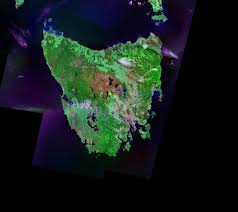The Tasmanian government is being urged to pave the way for more wind farms and facilitate more rooftop solar as it negotiates its way through its biggest energy crisis with the grid connection to the mainland lost and hydro levels falling to record low levels.
The government has already asked two of the state’s biggest industrial facilities – the Bell Bay smelter and the TEMCO manganese alloy smelter – to reduce output by up to 70MW as it watches its dams dry up, experts struggle to reconnect the Basslink connection across Bass Strait, and bushfires force the closure of some of its generators.
Already the government has had to bring back the Tamar Valley gas fired generator back into service and called for one generator to be flown at great cost from the Middle East. The use of gas has pushed wholesale prices up nearly three-fold too average more than $110/MWh in recent weeks.
Analysts argue that wind and solar would provide better options. Pitt & Sherry analyst Hugh Saddler says wind energy offers a cheaper option to both gas, and imports from Victoria, which were costing $90/MWh when Tasmania was trying to replenish its declining hydro resources by using Victorian coal-fired electricity. Then the drought worsened and the cable broke – and may not be repaired for several months.
“Maintaining electricity flow through Basslink at full capacity during the latter part of 2015 resulted in the wholesale spot price in the Tasmanian NEM region increasing steadily from about $40/MWh in September to about $90/MWh in the first weeks of December,” Saddler notes.
At the end of January 2016 it had reached $120/MWh. That suggests that wind farms would not just be a cleaner option, they would be a cheaper option.
The recent contracts obtained between the ACT government and wind farm developers suggests new wind farms could probably be built in Tasmania – even without support from the LRET – if they could receive a price close to $90/MWh.
Tasmania has abundant wind resources – at a high capacity factor of around 45 per cent, but currently, according to AEMO, only three announced new possible projects, with total capacity of 329 MW. It currently has a total capacity of 373MW, well short of Tasmania’s average demand of more than 1,000MW.
“Wind generation is an ideal complement to hydro with storage,” Saddler noted in a recent report. “In windy conditions, hydro can be turned back, allowing storages to replenish, and subsequently generate at higher levels when there is little or no wind.
The issue has taken on a political context with energy minister Matthew Groom under pressure – both from his own party and from Labor – to pave the way for a planned 33-turbine wind farm near Queenstown in the state’s north-west, which is struggling to get a power purchase agreement from the state-owned energy utility, Hydro Tasmania.
Parliamentary secretary Adam Brooks has written to a sub-committee of Cabinet, formed in response to the state’s energy security problems, urging them to intervene because the project “adds to our energy security and renewable energy security but also helps diversify the economy on the west coast.”
Labor Leader Bryan Green said the Granville Harbour wind farm – proposed by West Coast Wind – should be first on the Cabinet sub-committee’s agenda. “You’ve got a renewable project that is ready to go, effectively, just has investors, has planning approval, requires a power purchase agreement and yet they can’t get it up,” he said.
ABC reports that the Tasmanian Greens have proposed community solar farms, micro grids and loans to pay for the upfront costs of solar installation to help address long-term energy security.
The party wants to double the number of homes and businesses with rooftop solar to 50,000 in the next four years, by increasing the solar feed-in tariff. Greens spokeswoman Rosalie Woodruff said the prolonged outage of Basslink and record dry conditions highlighted the need to invest in solar energy.
However, the solar lobby says the solar industry is being held back by a state pricing regulator that does not understand distributed generation.
Jack Gilding, from the Tasmanian Renewable Energy Alliance, said a draft report from the Tasmania Economic Regulator acknowledges that solar PV can increase energy security when dams are low.
But because solar PV was only 1 per cent of Tasmanian electricity demand in 2014-15 and there is no current mechanism for rewarding this benefit, the report suggests it can be excluded from the calculation of feed in tariffs.
“This is a self-defeating cycle,” Gilding said. “Solar PV could meet much more of Tasmania’s energy needs, but until the full benefit is recognised, there will be no incentive for solar owners to invest in feeding energy into the grid.
“Tasmania is currently burning gas and will start importing brown coal fired power as soon as Basslink is fixed. Yet the draft report does not acknowledge any environmental benefit in increasing the use of solar energy in Tasmania.”











